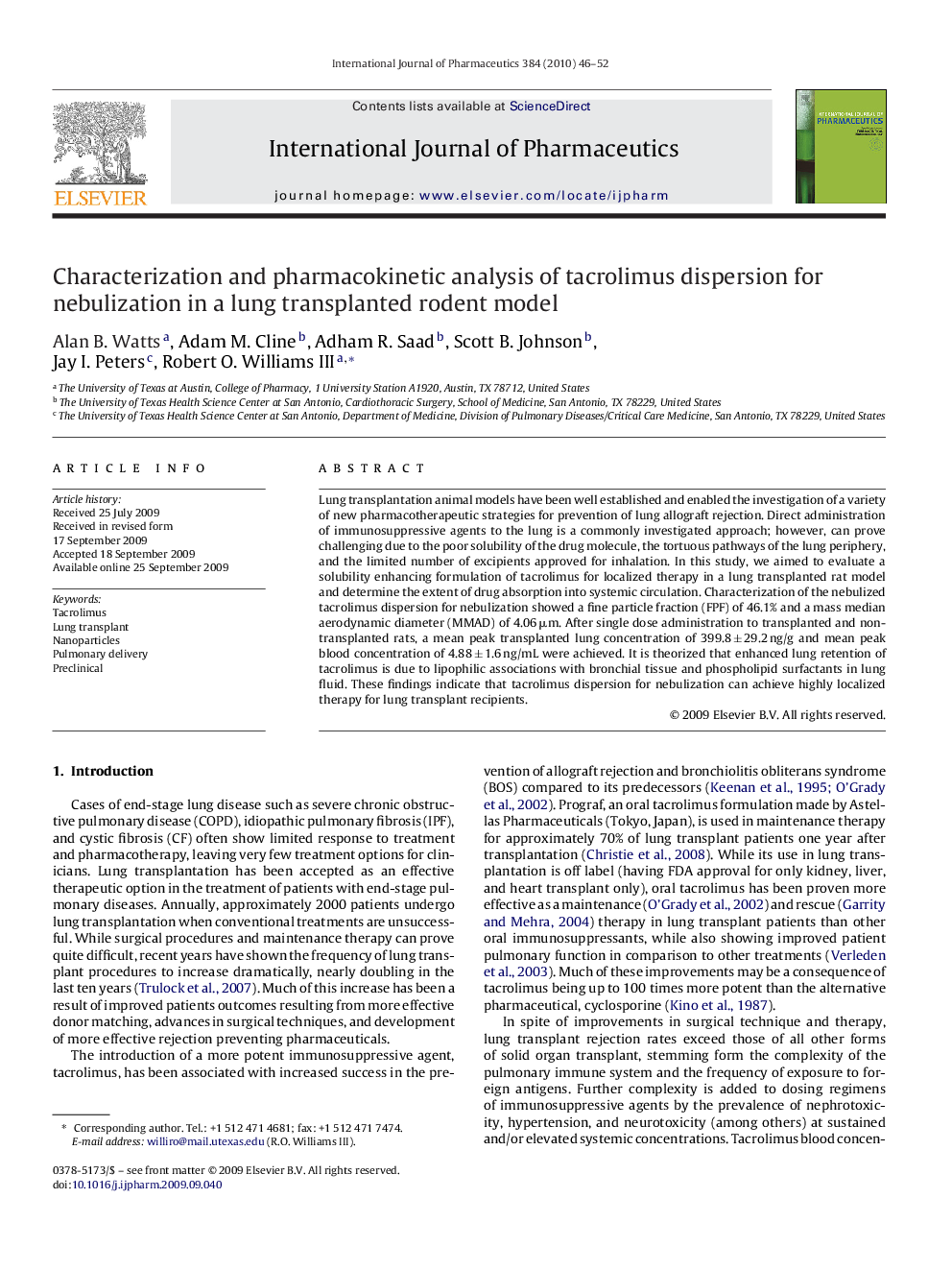| Article ID | Journal | Published Year | Pages | File Type |
|---|---|---|---|---|
| 2504244 | International Journal of Pharmaceutics | 2010 | 7 Pages |
Lung transplantation animal models have been well established and enabled the investigation of a variety of new pharmacotherapeutic strategies for prevention of lung allograft rejection. Direct administration of immunosuppressive agents to the lung is a commonly investigated approach; however, can prove challenging due to the poor solubility of the drug molecule, the tortuous pathways of the lung periphery, and the limited number of excipients approved for inhalation. In this study, we aimed to evaluate a solubility enhancing formulation of tacrolimus for localized therapy in a lung transplanted rat model and determine the extent of drug absorption into systemic circulation. Characterization of the nebulized tacrolimus dispersion for nebulization showed a fine particle fraction (FPF) of 46.1% and a mass median aerodynamic diameter (MMAD) of 4.06 μm. After single dose administration to transplanted and non-transplanted rats, a mean peak transplanted lung concentration of 399.8 ± 29.2 ng/g and mean peak blood concentration of 4.88 ± 1.6 ng/mL were achieved. It is theorized that enhanced lung retention of tacrolimus is due to lipophilic associations with bronchial tissue and phospholipid surfactants in lung fluid. These findings indicate that tacrolimus dispersion for nebulization can achieve highly localized therapy for lung transplant recipients.
